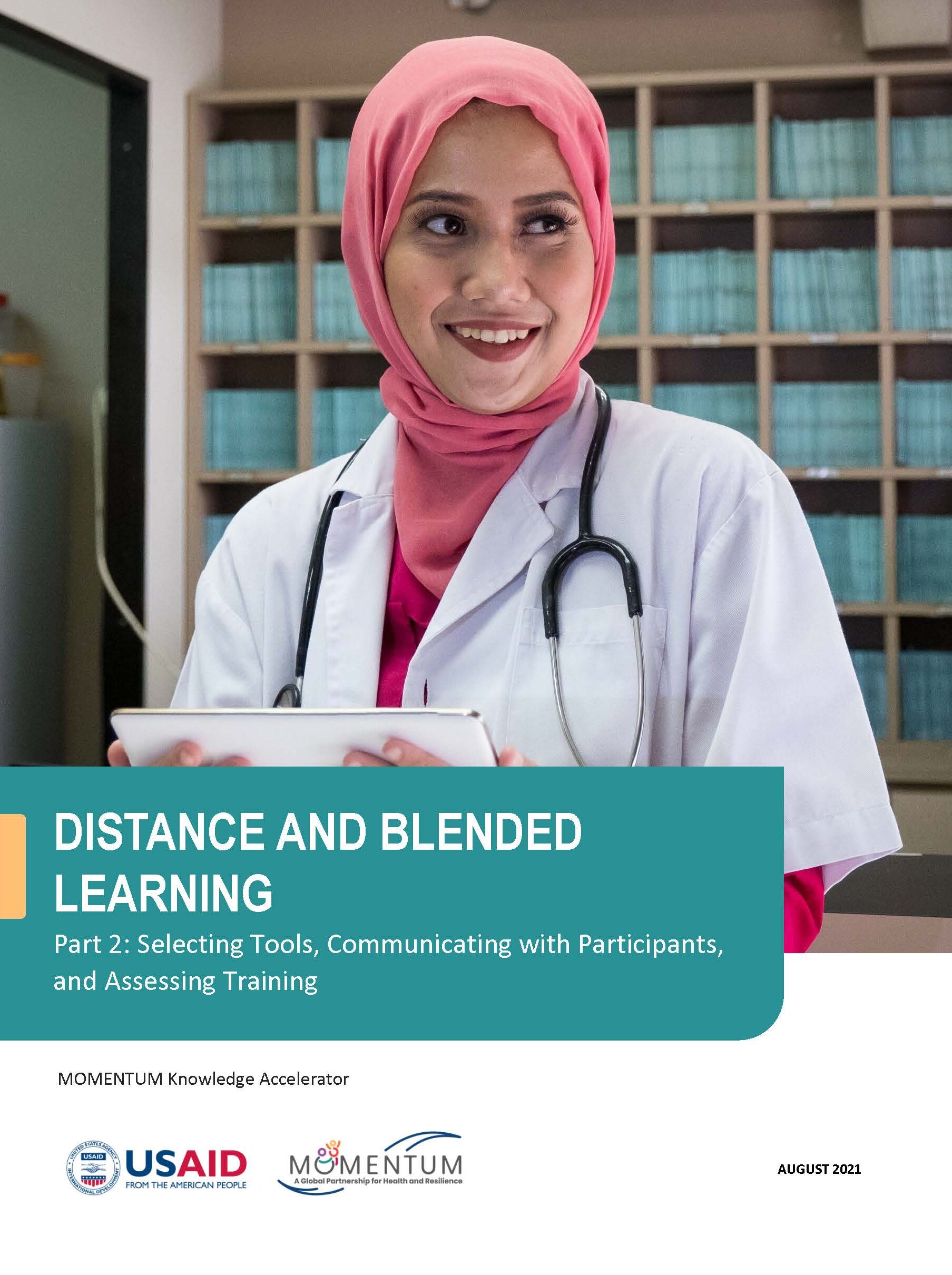Training & Guidance
Distance and Blended Learning Guide: Parts 1 & 2
Distance and Blended Learning, Part 1: An Overview and Introduction to Assessing Resources, Needs, and Capacities is an essential resource for implementers and local training partners working to transition their in-person training to a virtual format. This guide provides an overview of distance and blended learning, including how to assess training resources, participants’ needs, and technology access and skills. It also includes a suite of tools for conducting inventories, assessments, and surveys to design virtual training.
Distance and Blended Learning, Part 2: Selecting Tools, Communicating with Participants, and Assessing Training describes how to use what you learned in Part 1 to choose technologies for developing and delivering training and communicating with training participants. It also offers guidance on communications strategies to conduct training outreach and recruitment, onboard participants to the training and technology, and provide them with training support. Finally, it reviews approaches to assess the impacts and outcomes of distance and blended learning training.
Adapting Training Materials for Blended Learning: A Landscape Analysis of Best Practices: This Technical Brief is a supplement to the Distance and Blended Learning Guides: Part 1 and 2. It offers concrete steps, considerations, tools, and resources for projects and organizations that are adapting existing training materials to a blended learning format. It summarizes best practices in three overarching categories: 1) clarifying training goals and process, 2) maximizing access, and 3) maximizing learning and engagement.
We’re listening—tell us what you thought of these resources and how you used them!
Cliquez ici pour accéder à cette ressource en français.


